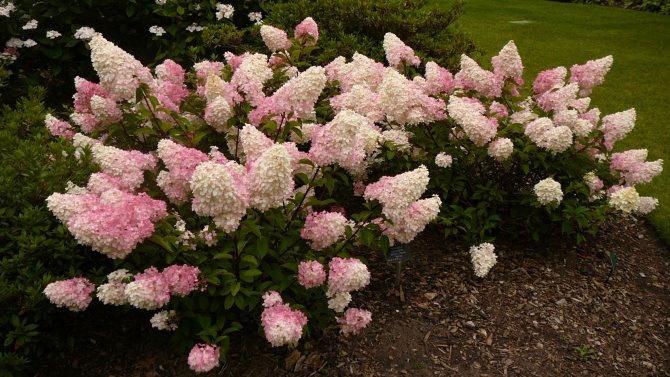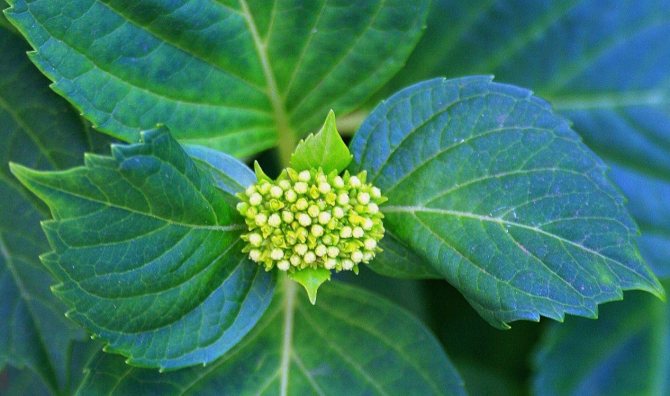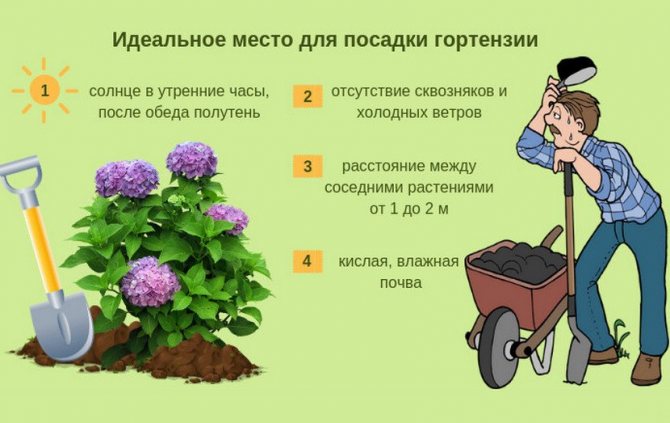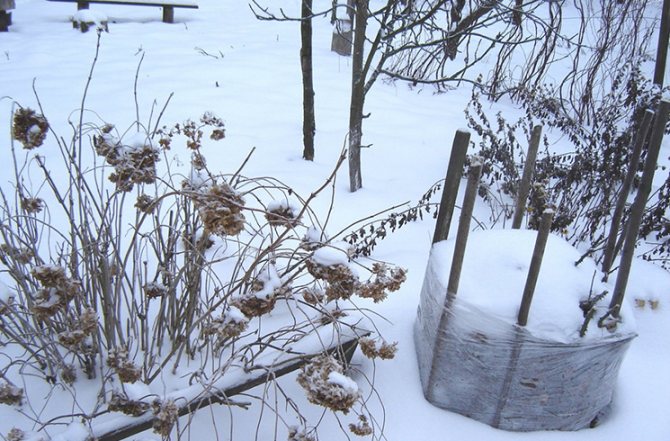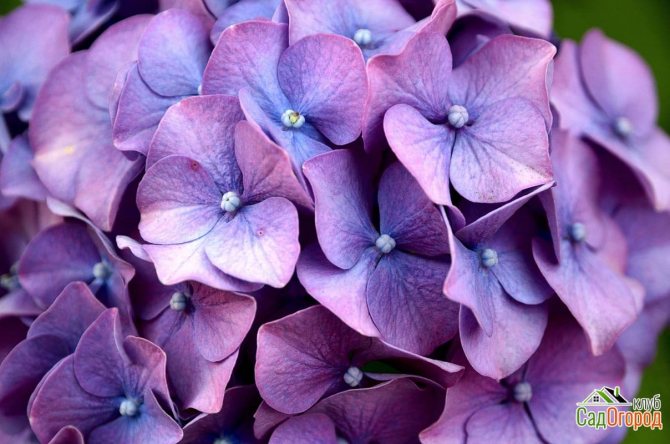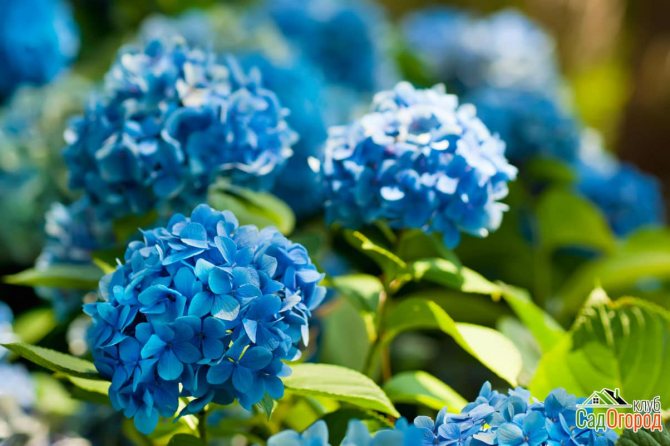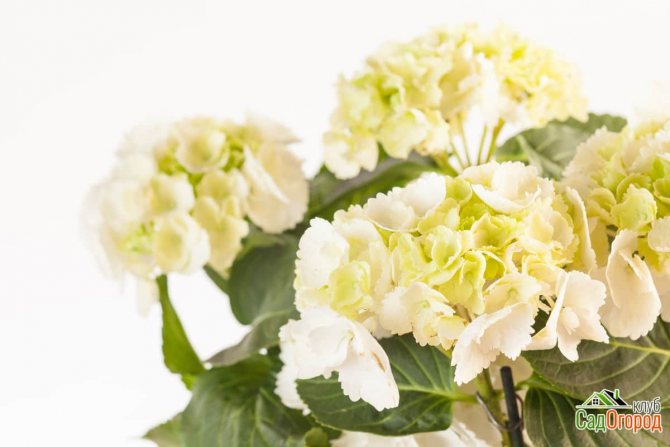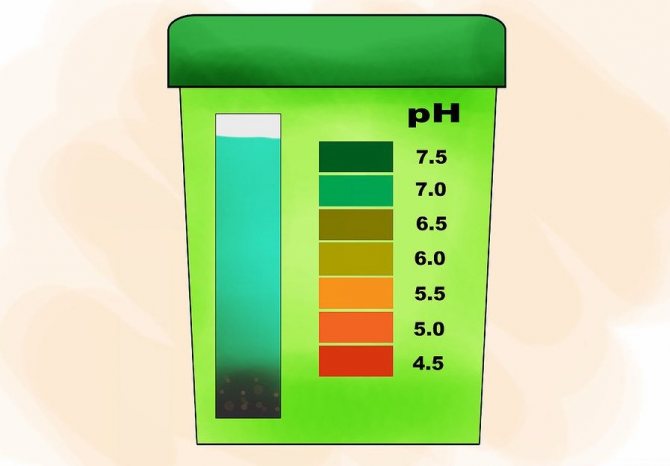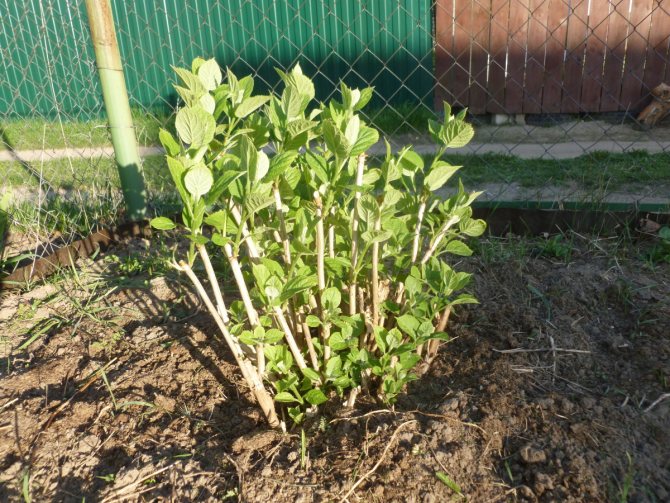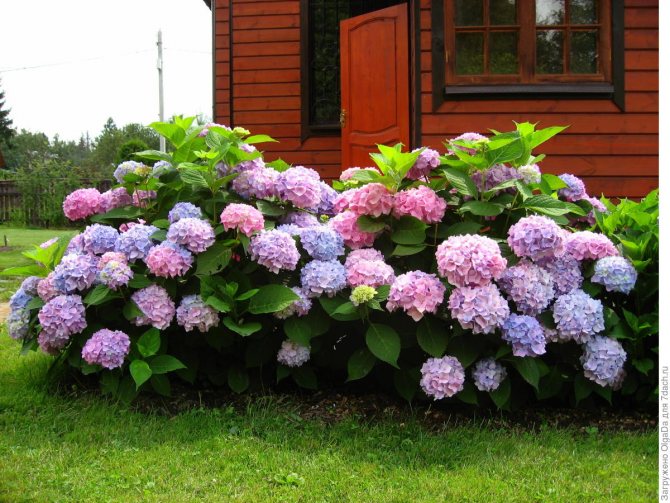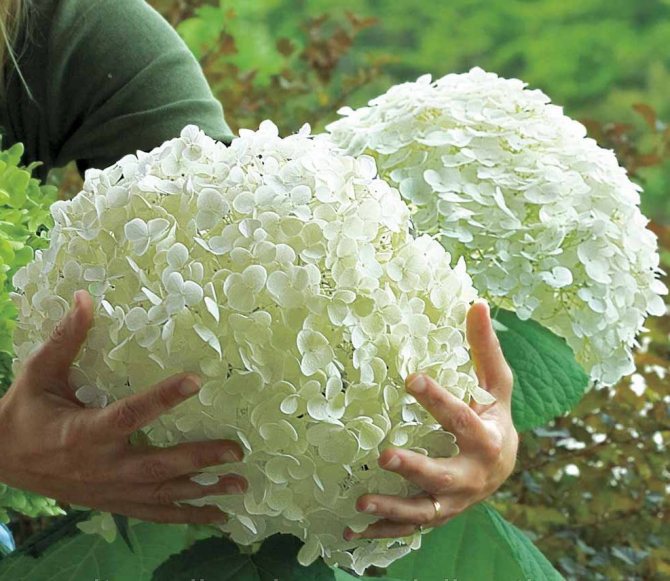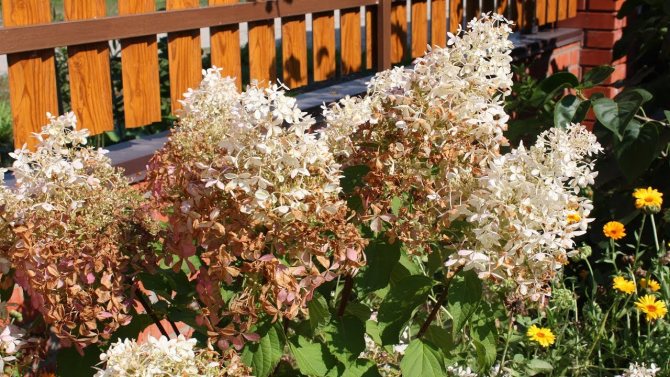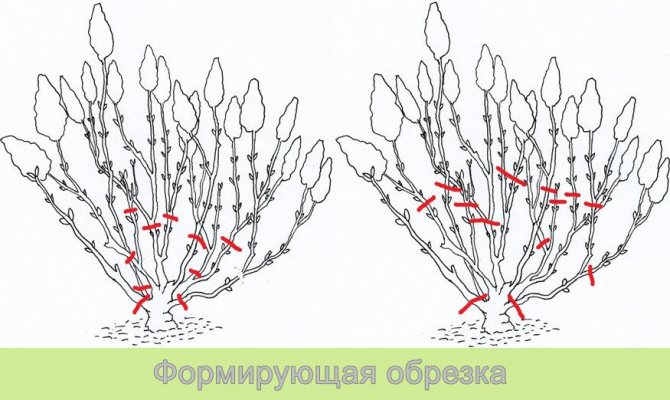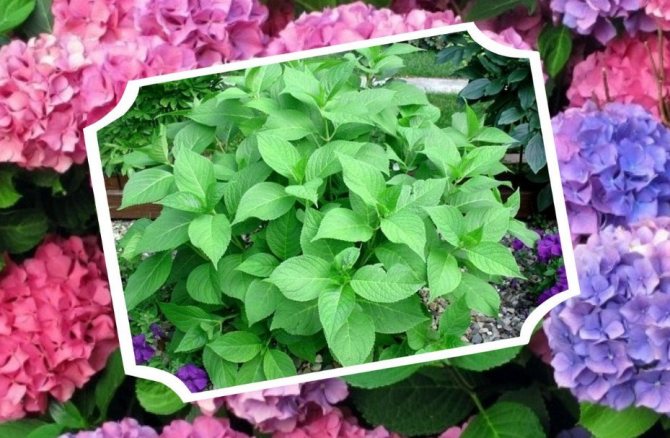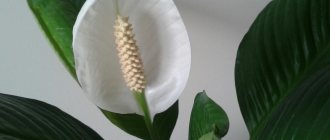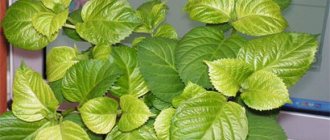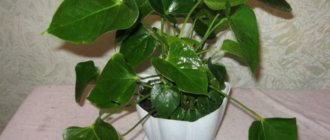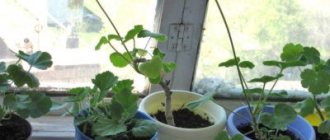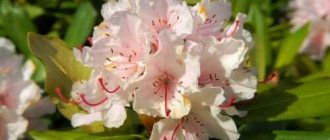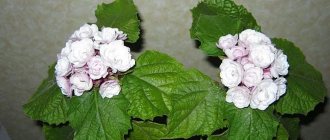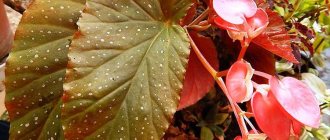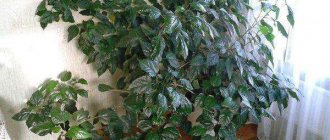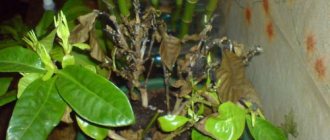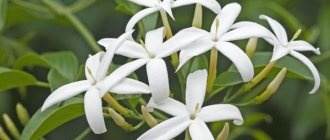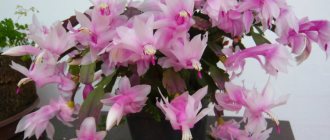Large-leaved hydrangea is a very popular shrub in many flower gardens. It belongs to the Hydrangia family, and is very often called that. The bush can grow up to 3.5 meters in height. It has large ovoid leaves, rich green color. Flowers are collected in a peculiar bunch, which can reach 20 cm in diameter. In decorative species, there are three colors of the plant: white, pale pink and sky blue. Florists love hydrangea for its long and abundant flowering. But sometimes it needs to be made to bloom, since the buds may simply not wake up after wintering. It can develop both outdoors and at home. This is a very light-loving plant.
When and how hydrangea should bloom
Landscape designers and gardeners strive to plant ornamental plants so that their flowering is continuous. A properly selected hydrangea variety will provide a vibrant bloom for the entire season.
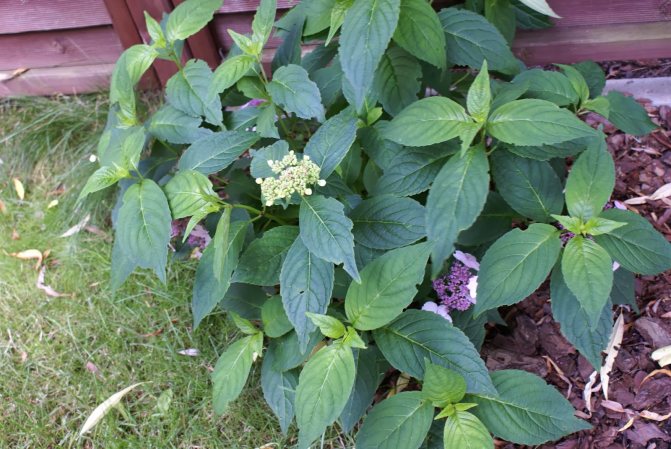
When the hydrangea does not bloom
Note! Hydrangea practically does not smell (and therefore does not attract bees and other insects). Bushes are often planted at the entrance groups (near the windows).
Early species begin to bloom in early summer, and the process ends in September (for most varieties). In temperate climates, the large-leaved shrub develops stably until the first frost. There are exceptions:
- Hydrangea macrophylla Hornly, Pinky Winky - blooms from August to September;
- Messalina, Green Racer - June to July
- Phantom - June to October.
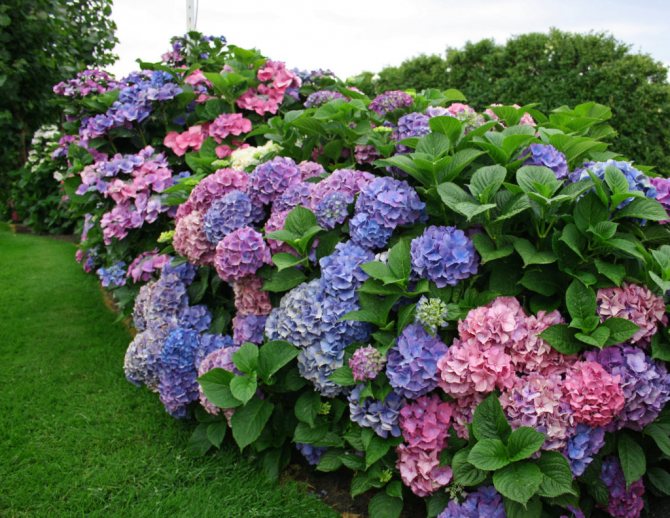

Hydrangea in the open field
The average flowering period for other varieties is from July to October. If you think about planting in advance, by combining individual varieties of hydrangea, the plant can delight with bright colors for the whole season. A special case is indoor hydrangea, the growth and development of which takes place at home. Usually these are undersized varieties.
Additional Information! Flowering depends not only on species nuances, but also on the acidity of the soil. It is important to regularly transplant the flower into fresh soil.
Household earth oxidizers include coffee grounds, used tea leaves, lemon juice solution (or commercial citric acid). Purchased seedlings bloom later. They need more time to adapt to open areas.
Watering
Potted hydrangea is demanding watering. Moisture should be moderate so that the roots do not rot and hurt. You need to water the flower with settled water at room temperature. Watering is performed only when the topsoil dries well. Additives to water for irrigation citric acid or vinegar cause abundant flowering.
Flowerbed hydrangea requires more moisture, so it should be watered regularly twice a week in hot weather and once if it rained for a week. One adult hydrangea bush requires 30 to 50 liters of warm, settled water.
Why garden hydrangea does not bloom, but only leaves grow
To understand why hydrangea does not bloom, but gives only foliage, it is necessary to analyze several aspects: the place and method of planting, the quality of watering and added fertilizers. Typical mistakes gardeners make:
- lack of measures to prepare for the winter or violation of general requirements;
- incorrect pruning of branches;
- mistakes in seasonal care.
Why garden or indoor jasmine does not bloom and what to do
Some of these shortcomings can be eliminated and the flower saved, others lead to the death of the stems and the death of the bush.
Frozen kidneys
Unexpected spring frosts harm ornamental crops. If a young plant experiences seasonal temperature drops, there will be no flowering. The only solution is to insulate the bush:
- mulch the soil with sawdust, peat;
- build a "house" of branches (for small bushes);
- cover with a box and non-woven material (often used for indoor plants);
- next spring, the hydrangea is shaded, they provide good complementary foods.
Attention! Dead buds, leaves, branches are cut off. The secateurs should be sharp, treated with a disinfectant. Trimming is carried out at an angle. Hemp is treated with a special agent.
Irrigation irregularities
Hydrangea loves abundant watering - 20-30 liters per bush per week (every 3-4 days). If summers are hot and dry, the frequency of watering is increased. Moisturizing is carried out every day or every other day. Additionally, the leaves are sprayed with a spray bottle. Mulching helps to retain moisture in the soil.
If the soil at the planting site is clayey, the water stagnates. In this case, drainage is formed. Loosening the soil will not give the usual result due to the high sensitivity of the roots. They are piled up no deeper than 10 cm.
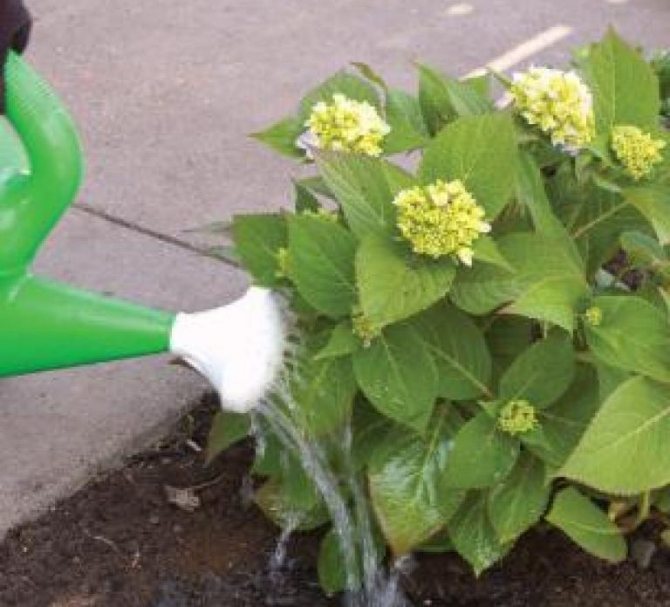

Watering is the most important component of hydrangea care
Incorrect landing site
The place for landing is chosen in advance (before the purchase). Hydrangea, regardless of the variety, loves good lighting, but does not tolerate direct sunlight. Slight partial shade is acceptable. The best option would be a place near the fence or walls.
Note! Avoid planting hydrangeas next to tall, strong trees. They create excessive shading and deprive the shrub of moisture.
In open areas, the decorative culture will bloom for a short time. Large-leaved varieties are planted only in the shade. In addition to lighting, the strength and direction of the wind are taken into account. Hydrangea does not like strong gusts from the north and east - they weaken and break the stems.
Excess or lack of nutrients
Mineral fertilizers are necessary for every ornamental plant. Lack of nutrients, as well as excess, leads to poor growth, lethargy, lack of flowering, and disease.
Additional Information! Nitrogen fertilization is especially harmful in the second half of summer and autumn. The substance accelerates vegetative processes. At the same time, the hydrangea does not have time to prepare for wintering, then dies.
Nitrogen compounds are applied only in the spring. In summer and autumn, the mixture should contain mainly phosphorus and potash fertilizers. They activate the ovary, which promotes the development of inflorescences.
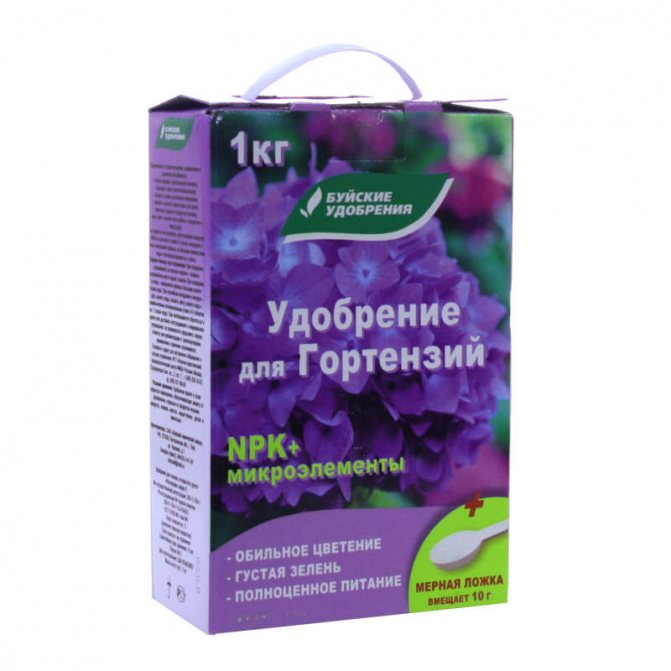

Fertilization is carried out in the fall
Regardless of the purpose of feeding, it is important to follow the recommendations for use, which are indicated on the package. Highlights:
- the first spring root feeding should consist mainly of nitrogen components with the addition of potassium, phosphorus and other minerals;
- fertilizers are dissolved in clean water, the usual dosage is 10 liters per 1 sq. m of soil;
- the second feeding is applied during the period of bud formation - potassium plus phosphorus, nitrogen is permissible in a small amount (so as not to create a deficiency of the element);
- the third stage - flowering time, potassium-phosphorus feeding;
- fourth - autumn, upon completion of flowering, nitrogen-free mixtures with potassium and phosphorus.
You can use special ready-made formulations for hydrangeas (selected by variety and stage of growth).
Incorrect pruning of shrubs
Pruning is an essential step in the care of your tree hydrangea. It is impossible to get beautifully growing inflorescences on chaotically spaced stems. There are varieties that do not need autumn pruning.Gardeners often remove the stems with flower buds. Such a flower will not bloom next year.
Some varieties grow quickly, most of the branches go into the bush. If you do not thin out, the inflorescences will not be able to develop normally, they will be small and inconspicuous. Every 5 years, rejuvenating pruning is done - no buds appear on old branches.
Damage by diseases or pests
Hydrangea is practically immune to disease. The lack of scent does not attract bees. Pest insects rarely appear on bushes. Most often, chlorosis appears on the leaves of the shrub - the green color disappears, the leaves become pale, dirty yellow, spotted, and quickly fall off. Inflorescences become small or do not form at all. The bushes are treated with a solution of ferrous sulfate (including those on which the disease has not yet manifested itself). Fungal infections are eliminated with the help of Bordeaux solution, copper sulfate.
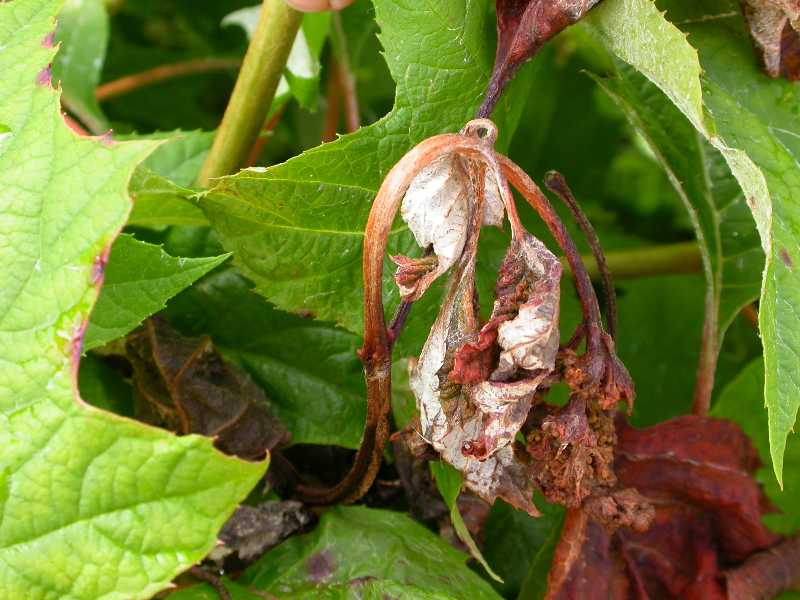

Diseases do not often bother the hydrangea tree
Hydrangea pests include slugs, spider mites and aphids. If the shrub is strong, insects will not spread. In most cases, young petiole plants or those weakened after illness are affected.
Note! Excessive pruning can weaken the bush. If you want to remove a significant number of stems, the procedure is carried out in several stages.
Planting an already blooming hydrangea seedling
Hydrangeas do not tolerate transplanting well. The adaptation period can drag on for the entire season, therefore, the existing inflorescences will fall off, and new ones will not appear. Difficulties arise for the following reasons:
- too much or a lack of fertilizers at the stage of growing a seedling;
- moving a flower from an acidic soil to a slightly acidic or alkaline;
- if the bush has a closed root system (grew in a pot), the earthen ball is not removed.
It is important to transplant the seedling correctly, to achieve optimal microclimate parameters. It is necessary to make a landing pit in advance, provide shade.
Weak root system
The problem arises from transplantation, lack of nutrients, improper care or neighborhood. Determine the problem by lightly sipping on the bush - weak roots will quickly separate from the soil, tear, break. To remedy the situation, it is necessary to find out the reason for the weakening of the root system, add fertilizers that are relevant for the current stage of growth, and mulch the soil.
Diseases
Hydrangea affected by diseases does not grow. This can be determined by external signs.
- Chlorosis - a common disease among all varieties of horticultural crops. The leaves change color to a lighter color, while the veins remain dark green. Leaves become smaller, buds form small, deform and fall off. Plants cannot assimilate nutrients due to impaired metabolism. Usually the problem occurs if the flower has been growing in one place for many years. For treatment and prevention use "Antichlorosis", "Ferovit", "Agricola". It is effective to use compositions prepared with your own hands: a solution of 1 liter of water, 4 g of citric acid and 2 g of ferrous sulfate. For large planting areas, prepare the following composition: 10 liters of water and 40 g of potassium nitrate.
- Gray rot characterized by tissue damage. They become watery. Fungal disease appears during the period of prolonged rains. Damaged areas must be removed, removed off-site and burned. Treat with "Fundazol".
- Peronosporosis occurs when the air temperature is high and the air is humid. Greasy spots on foliage darken over time. The treatment is carried out with a composition of 10 liters of water, 15-20 g of copper sulfate and 150 g of liquid soap (or a solution of laundry soap).
- Powdery mildew manifests itself in the form of yellow and green spots, gray bloom on the inside of the leaf.Young shoots, deforming, die. The bush is slowly withering away. To combat the disease, it is effective to use fungicides: "Topaz", "Fitosporin-B", "Skor".
- Septoriasis visible on brown spots on the foliage. Plants are treated with copper sulfate.
- Ring spot - a viral disease that affects shrubs in a short time. It is impossible to stop necrotic processes. The shrub is removed along with a clod of earth and destroyed.
It is necessary to periodically carefully inspect the plantings in order to determine the reason why the hydrangea does not grow. Diseases in the early stages are easily eliminated.
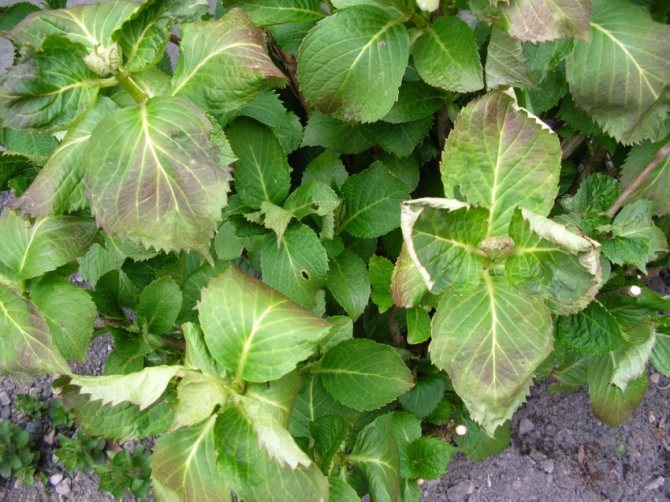

The reasons for the lack of flowering in some varieties of hydrangea
Hydrangea varieties differ not only in external characteristics, but also in care features. For example, some bloom well in the shade, others poorly. This applies to three main groups.
Paniculata
What to do if fuchsia does not bloom at home
Hydrangea resistant to low temperatures (if there is no excessive frost, wintering without shelter is allowed). Most often it does not bloom due to unsuitable soil:
- sandy soil - unacceptable for all types of plants;
- clayey - picks up moisture, which leads to stagnation (additional drainage is needed);
- loamy acidic - the best option.
Note! If there is not enough fertilizer, additional feeding is provided.
Large-leaved
A common problem with large-leaved hydrangea is kidney freezing. It is important to insulate plants for the winter. Pruning broadleaf crops is carried out carefully, regularly, cutting off branches at a slight angle. You can not remove the stems formed on last year's processes - it is on them that the buds are tied.
Tree-like
This group of plants is not resistant to frost and requires careful shelter. Sometimes the inflorescences grow colorless, which means a lack of nutrition. Fertilizers begin to be applied from the moment the first green leaves appear and continue throughout the season. The reason for the lack of flowering is insufficient watering.
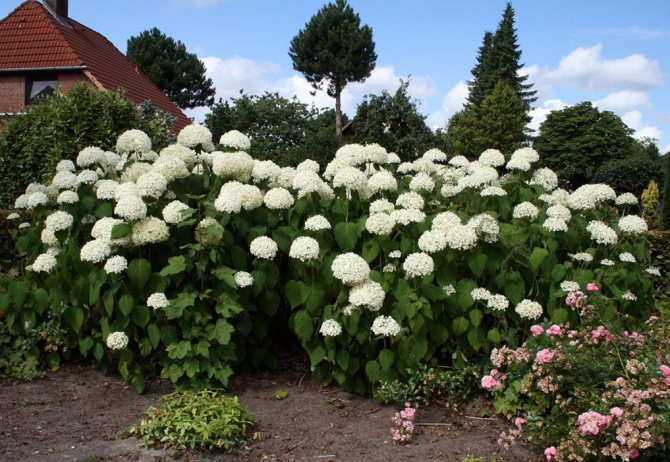

Tree variety
Pink
Pink hydrangea is extremely popular in Russia. There are treelike and paniculate types. The lack of flowers depends on the variety of rose bush. If the plant changes color to blue or white, then the acidity of the soil has changed.
What is a plant
Hydrangea is a perennial flowering shrub with imposing elliptical toothed leaves. Due to the long flowering (from March to November), hydrangea pleases its owners for a long time with lush caps of inflorescences of red and blue shades.
Fact! The color of hydrangea flowers depends on the composition of the soil. With increased acidity, they acquire light blue shades, with neutral pH - white and peach, in an alkaline environment - lilac and pink. It is interesting that the color of the inflorescences is given by the bowls of the perianths, and the petals themselves are transparent.
After flowering, fruits remain, a kind of box containing many seeds. In indoor conditions, a water lover can reach a meter height.
Why indoor hydrangea does not bloom
Why hippeastrum does not bloom - only leaves grow
Indoor varieties are considered unpretentious, bloom luxuriantly and brightly. There are several reasons for the lack of inflorescences:
- change of location - for example, after the purchase, the flower moves from the store to the apartment, the lighting, the humidity of the air change, the plant is under stress, shedding its buds;
- no transplant - purchased seedlings are usually grown in sub-extract mixtures, and not in full-fledged nutrient soil; such a flower needs a transplant, with the provision of abundant watering and feeding;
- being in one pot for more than two years - the root system grows, the absorption of nutrients and water deteriorates;
- an excessive amount of nitrogen fertilizers (the best option is special mixtures for hydrangeas).
On a note! Indoor varieties do not tolerate direct sunlight (especially unprepared seedlings) and excessive shade. You can put a flower pot on a windowsill, but shade the window with a curtain.
How to make a shrub bloom
In the fall, plants are prepared for wintering. If the hydrangea does not bloom during the season, a dense shelter is required. Main steps:
- loosening, covering with mulch (use crumb from tree bark);
- adding nitrogen-free fertilizers (dusting with humus or compost);
- for varieties that are resistant to frost, they form special shelters from branches, cover with a waterproof cloth (in the conditions of the Urals and Siberia).
If the hydrangea variety tolerates low temperatures, it is better not to transplant the plants into pots - the shrub does not adapt well to the new place.
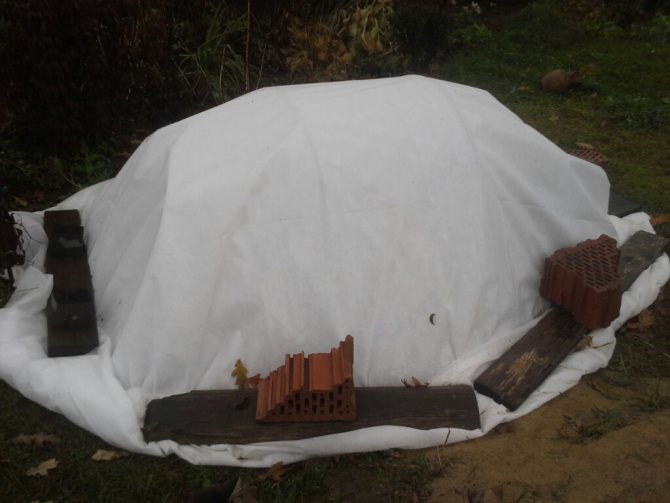

Varieties with low frost resistance cover for the winter
Timely pruning
Pruning is carried out in spring and autumn. The secateurs are sharpened, treated with a disinfecting solution.
Selection of suitable dressings and fertilizers
Nourish plants from spring to winter. The formulations are mixed by hand or used ready-made. Mixtures with prolonged action are applied once - in early spring. During the season, fertilizers will slowly penetrate the soil and feed the plants.
Change in soil acidity
Soil acidity is a determining factor for hydrangeas. The shrub reacts to any long-term changes (the color of the inflorescences changes, with sudden jumps, the bushes stop blooming, weaken). Experienced gardeners use special equipment to measure the acidity and amount of minerals in the soil.
Preparing for winter
Street Hydrangea blooms profusely if its wintering was organized correctly. The bushes of the bed hydrangea are tied with twine after pruning and fertilization. The roots are covered with foliage, spruce branches and coniferous branches. The layer of mulch should be at least 10 cm. In regions with harsh natural and climatic conditions, hydrangea bushes are additionally covered with a film. Preparing a potted hydrangea for wintering involves:
- removal of dry inflorescences and leaves;
- placing the pots in a dark, cool place (+ 8-10 ° C);
- minimal soil irrigation.

